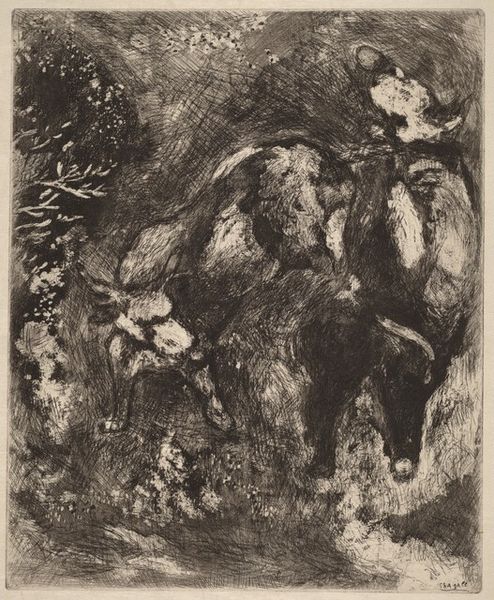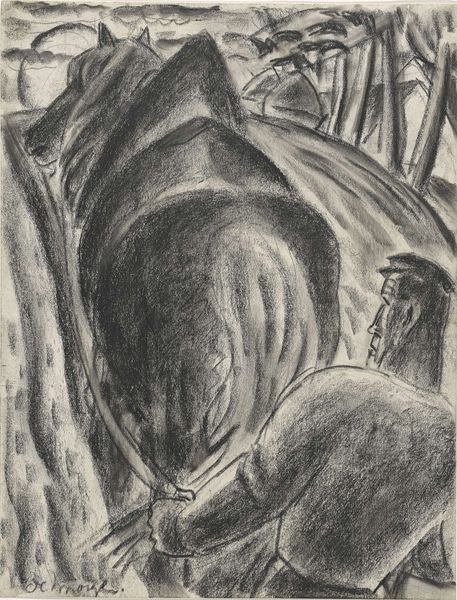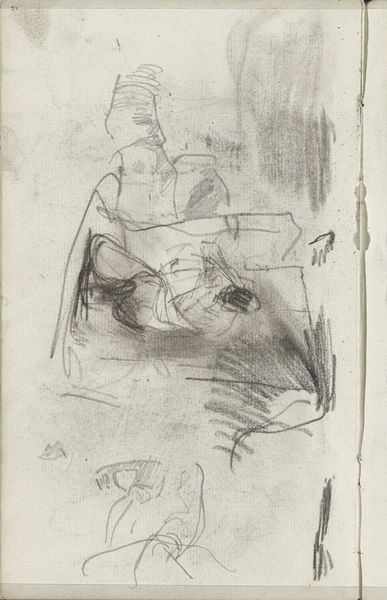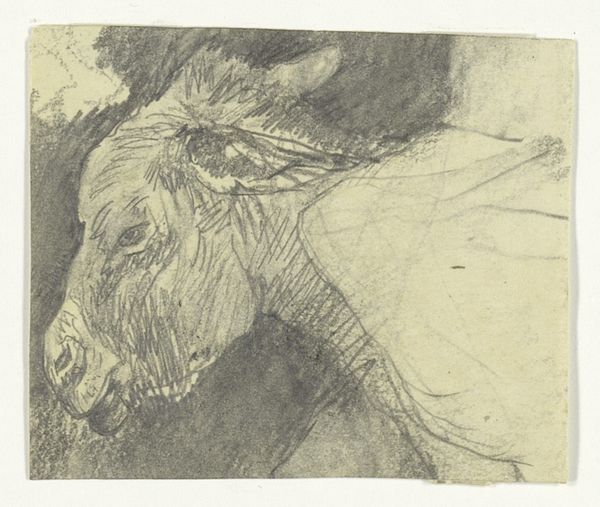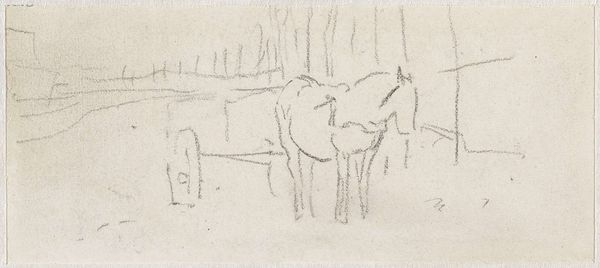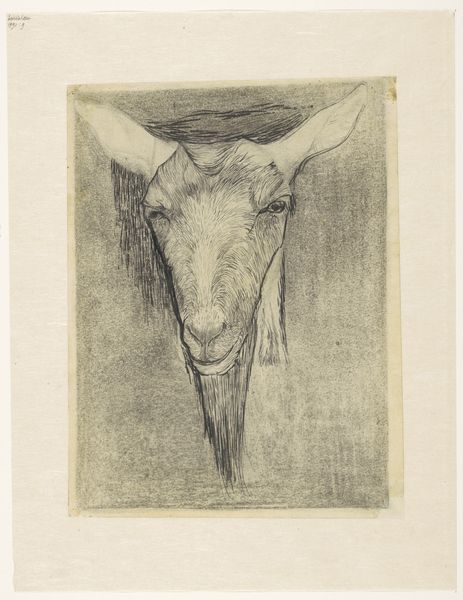
drawing, pencil, charcoal
#
drawing
#
pencil drawing
#
pencil
#
charcoal
#
watercolor
#
realism
Dimensions: height 410 mm, width 203 mm
Copyright: Rijks Museum: Open Domain
Curator: Let's take a moment to reflect on Adolf le Comte's "Stal met een etende ezel," or "Stable with a feeding donkey," a work created sometime between 1860 and 1921. It is a beautiful example of a realist style using pencil and charcoal and with traces of watercolor. Editor: There is something so gentle about this piece. It almost feels like a memory, rendered in soft, muted tones. A simple subject depicted with such a tender touch. Curator: Indeed. We have to consider the context of the late 19th and early 20th centuries, a period marked by immense social and economic change impacting agriculture. Representing animals in this way might signal shifting attitudes toward labor, or rural life as industrialization took hold. Who is given representation and dignity through art tells a broader story. Editor: Looking closer at the drawing, the donkey becomes an archetype of humility and labor. Donkeys have always been symbols of service, endurance, even stubbornness. The downcast head and humble meal further emphasizes that iconography, connecting the animal to centuries of depictions in religious and secular contexts. Curator: And that representation intersects with questions of class. Labor, and rural life during this period often intersected, with limited economic mobility. Le Comte positions this simple scene of a donkey as deserving of artistic consideration. Editor: Absolutely, the light around the manger is like an aura, it reminds me of traditional Nativity scenes. The animal is not just eating; it's participating in a ritual. The image speaks to broader themes of sustenance, reliance, and care. It asks who, or what, do we deem worth attention? Curator: Considering the work through that lens enriches its interpretation. Thanks to your analysis I feel empowered to recognize not only its historical context, but also its broader symbolic resonance. Editor: A wonderful insight. By blending those contexts, we see new dimensions, and meanings that were not previously accessible.
Comments
No comments
Be the first to comment and join the conversation on the ultimate creative platform.

